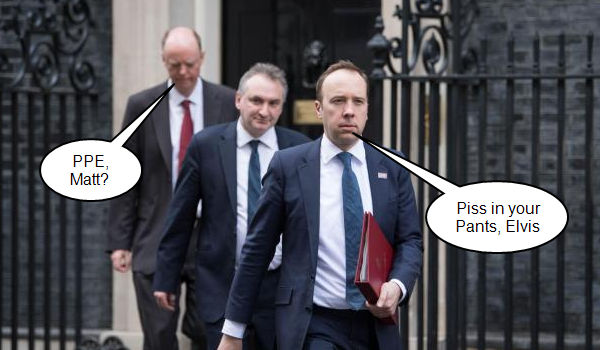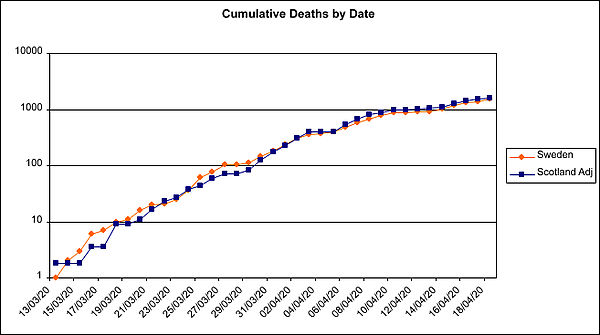Bad Karma Government

Even in the bleakest of lockdowns, a Sunday evening dose of The Good Karma Hospital fills the unforgiving hour with sixty minutes’ worth of pure escape. ITV’s Call the Midwife with commercial breaks avoids confinement in an East End convent, and instead sets itself in the bright colours and bustle of an Indian cottage hospital with ideas above its station. There is enough energy in just one episode to keep the lights on in Leeds for a week. All human life is there, from the impish kid to the rheumy old man with signs of Parkinson’s disease. Unafraid of difficult subjects — a recent story line tackled sexually driven acid burns, made all the more poignant by Amanda Redman’s presence, while another took on traditional resistance to vaccination — the characters swing from overflowing, as Clive James would surely have observed, with amused compassion and quizzical adoration, to exchanging smouldering eye work over their surgical masks. Overseeing all is the hospital chief, the splendid Dr Lydia Fonseca, played to perfection by Redman as Sir Lancelot Spratt in drag.
Would that we had such a rich cast and narrative in our government. Instead, rudely decapitated, it has crashed this way and that, like a headless chicken. The head, meanwhile, is being kept alive at Checkers. Every now and then we are allowed a glimpse, as if we were Victorians peeping inside Bedlam. From time to time, disembodied parts of the chicken do a media tour, and assure us that the head is in good shape.
Back in Westminster, the headless chicken last week jammed another brick on the lockdown throttle, and puffed up a funk of phoney tests that would need to be met before any thought could be given to lifting of one or more of the bricks. The rhetoric was hollow, the logic unconvincing. At least one observer was reminded of the Not the Nine o’Clock News sketch in which a retired police commissioner commends Goodyear tyres. ‘I am convinced this is a major contribution to road safety,’ he says, as a car hurtles past and smashes into oblivion. Today, the line would be ‘I am convinced the lockdown is a major contribution to public health.’ and the car would have ‘The Economy’ writ large on its side.
The Bad Karma government says it is always led by science. Dr No has already shown that in reality much of this so-called science, especially in the early days, was and is numerology, a wind-up clockwork set of predictions — forecasts — based on various what-if scenarios. As it happened, the particular set of forecasts favoured by the government contained within it the mother of all dossiers of despair, alarming enough to electrify the government into taking harsh and severe measures, including the imposition of lockdown.
That lockdown came into force almost four weeks ago, and in the interval something very important has happened. We have been able to collect real data, and do real science. This isn’t numerological forecasting, it is counting real numbers, and then looking at what those numbers tell us.
Below is an updated to yesterday version of a chart Dr No published recently. It compares cumulative deaths in two small North European nations, Scotland and Sweden, that have followed very different approaches to managing the pandemic: UK style police enforced lockdown in Scotland, laissez faire voluntary lockdown, combined with loose vulnerable people protection in Sweden. As the populations are small but not the same size (5.5 vs 10 million), Dr No has adjusted the Scottish figures to show what the counts would be if it had the same population as Sweden.

Figure 1: Cumulative covid-19 deaths by date for Sweden and Scotland, after adjustment for population size. Deaths plotted on a log scale, which transforms exponential curves into something closer to straight lines, and makes them easier to compare. Data sources: Sweden: JHU Scotland: Scottish Government via Wikipedia.
The most striking thing is the lines, the adjusted cumulative counts, are almost identical. Differences between the two nations notwithstanding, this data, this science, strongly suggests that lockdown makes in effect no impact on the natural history of the pandemic. The second thing to note is that the lines aren’t entirely straight, as they would be for unfettered exponential growth. Instead there is a gentle trend towards a flattening. What this tentatively suggests — it is early days — is that the pandemic may already be slowing of its own accord. The natural history of covid-19 may turn out to be as novel as the virus.
We shall have to wait and see if that is the case. In the meantime, our headless Bad Karma government might do well to do as it says it does, and be led by science, science which calls into serious question whether hard lockdown is any better than soft lockdown in reducing deaths from covid-19. That question is the urgent question of the day.

It certainly is! And no doubt Dr No’s question will not be raised by the government as it could reveal that its panic response, was in part out of pressure from the mainstream media, and in other out of simply not knowing what to do. But just do something!
I imagine Swedes to be cycling briskly in cool fresh, unpolluted cities from saunas to fish bars. They are notoriously healthy in almost every way the Scots are not. So proportionally fewer of those infected would die
Yes, we both know the Scot is the sick man of Europe and the Swedes no doubt spend >>> per capita on health but as mentioned on twitter the Swedes have a significantly older population (20.4% > 65y vs 16.9% > 65y for Scotland) and greater age appears to be a major risk factor for serious illness and death in covid-19 disease. Dr No may get round to doing an age stratified comparison at some point. Excellent post on your blog today on consulting during covid, by the way.